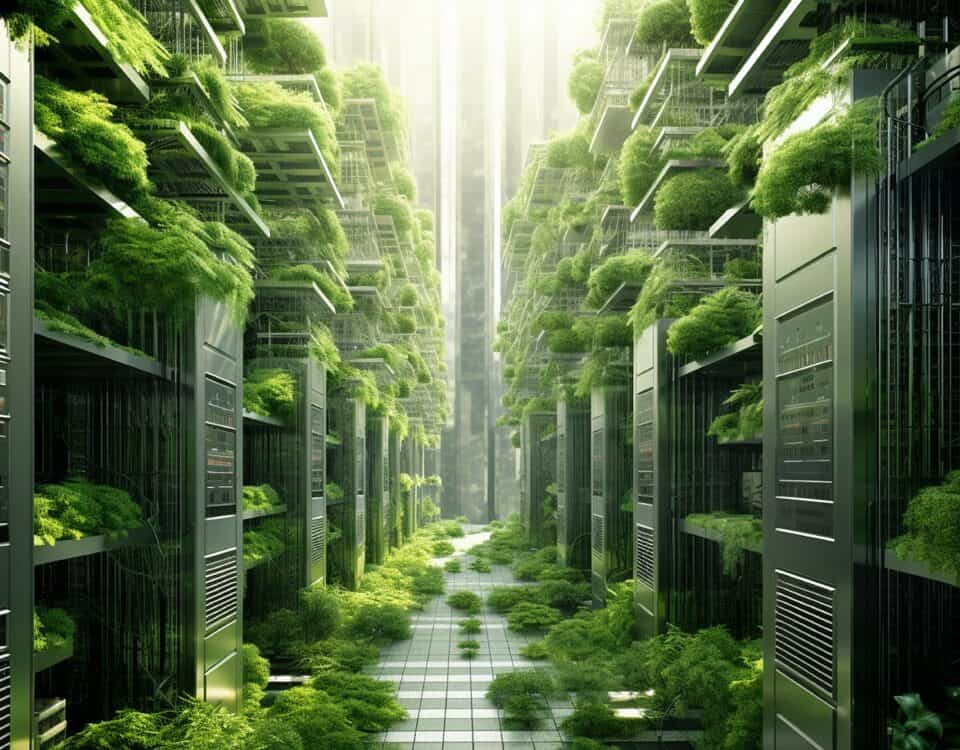
5 Factors & Tips for Choosing School Comfort Cooling Systems
July 31, 2024
How Teacher Shortages Impact Air Conditioning in Schools
August 12, 2024In today’s climate-aware world, environmental impact and sustainability have become paramount considerations when choosing a cooling system. As we look toward the future of advanced cooling technologies, green cooling stands out as a critical aspect that cannot be overlooked. This shift towards eco-friendly cooling solutions is not just about meeting regulatory requirements; it’s about embracing a fundamental change in how we approach temperature control.
One area where this shift is evident is the choice of refrigerants for cooling systems. The transition to green refrigerants represents a critical step in the global effort to promote environmental sustainability. Better yet, this shift is not only the most responsible thing to do, but it can also be a smart business decision.
The Problem with Traditional Refrigerants
Traditional refrigerants, such as chlorofluorocarbons (CFCs), hydrochlorofluorocarbons (HCFCs), and hydrofluorocarbons (HFCs), have long been used in cooling systems for their efficiency and reliability. However, it was later discovered that these substances have significant environmental drawbacks. CFCs and HCFCs contribute to the depletion of the ozone layer, and HFCs, while not as damaging to the ozone layer, are potent greenhouse gases with high global warming potential (GWP).
The discovery of these environmental hazards led to sweeping regulatory changes on a global scale:
- The Montreal Protocol (1987) aimed to phase out ozone-depleting substances like CFCs and HCFCs.
- The Kigali Amendment to the Montreal Protocol (2016) focused on reducing HFCs due to their high GWP.
- The European Union plans to cut HFC emissions by two-thirds by 2030 and achieve climate neutrality by 2050.
- The US American Innovation and Manufacturing (AIM) Act works to reduce HFC production and consumption by 85% by 2036 and completely ban HCFCs by 2030.
These regulatory changes have accelerated the development and adoption of greener alternatives. As a result, the cooling industry has significantly shifted towards using environmentally friendly refrigerant solutions that provide efficient cooling without compromising the planet’s health.
What Are Green Refrigerants?
Green refrigerants are environmentally friendly alternatives to traditional refrigerants. They are designed to address the major environmental concerns associated with conventional refrigerants while still providing efficient cooling. The two most significant factors that make a refrigerant “green” are low global warming potential (GWP) and low ozone depletion potential (ODP). Some safety-related factors, such as flammability and toxicity, are also important when determining if a refrigerant is “green”. Yet, these factors take lower priority than the environmental factors, and choosing such refrigerants requires careful consideration.
Types of Green Refrigerants
Natural refrigerants can be found naturally in the environment and can be used as cooling agents with minimal environmental impact. These refrigerants have been recognized for their eco-friendly properties and efficiency in cooling applications. Examples of natural refrigerants include ammonia, carbon dioxide (CO2), hydrocarbons (HC) like propane and isobutane, air, and water (like in evaporative cooling). To put things in perspective, while traditional HCFC refrigerants have an ODP of 0.2-1 and a GWP of 1,000-5,000, ammonia and carbon dioxide have an ODP of zero and a GWP of 0 and 1, respectively. Although environmentally superior, natural refrigerants are not free of other concerns, such as corrosion, toxicity, high pressures, flammability, or, in some cases, lower operating efficiencies.
Synthetic green refrigerants are man-made substances designed to mimic the cooling properties of traditional refrigerants while minimizing environmental impact and safety concerns. The most prominent among these are hydrofluoroolefins (HFOs), which gained popularity as a refrigerant alternative following Montreal Protocol updates. They boast a GWP of less than 1, zero ODP, low toxicity, minimal flammability, and high energy efficiency. Their ease of manufacture and transport makes them suitable for large-scale cooling systems. However, it’s important to note that not all synthetic refrigerants are considered green. If choosing synthetic options for your facility, verify their eco-friendly status to ensure environmental compliance.
The Benefits of Green Refrigerants
Environmental Benefits:
First and foremost, green refrigerants offer significant environmental advantages over traditional refrigerants. This is mainly reflected by these refrigerants’ much lower GWP and ODP rates, addressing the primary concerns that led to the phase-out of older refrigerants. By adopting these eco-friendly alternatives, industries can dramatically decrease their environmental footprint to ensure sustainable and eco-friendly cooling.
Operational Benefits:
Green refrigerants provide enhanced performance and efficiency, with some new green gases delivering a cooling effect that is four times greater than traditional HFCs. This increased efficiency not only improves the effectiveness of cooling systems but also reduces energy consumption. Additionally, green refrigerants are designed to be safe and compatible with existing systems, ensuring a smooth transition from traditional to green technologies. This compatibility allows for easier retrofitting and upgrading of current systems, making it feasible for businesses to adopt greener alternatives without significant disruptions.
Economic Benefits:
The adoption of green refrigerants can lead to notable economic advantages as well. As was just explained, many green refrigerants offer improved energy efficiency, which can result in significantly reduced energy consumption and lower operational costs. Furthermore, using eco-friendly refrigerants can reduce regulatory compliance costs. As governments implement stricter environmental regulations, proactively transitioning to green refrigerants can help businesses avoid penalties and take advantage of incentives for using environmentally friendly technologies.
Environmental Sustainability Leads to Operational Sustainability
Eco-friendly refrigerants address the harmful environmental effects of traditional refrigerants while also facilitating the sustainable and smooth operation of critical facilities like busy data centers and mobile stations. By setting up these facilities in a greener, more energy-efficient, safe, and cost-effective manner, green refrigerants create the ideal conditions for reliable operation. This balance of environmental responsibility and operational efficiency not only makes green refrigerants a responsible choice but also a smart business decision, ensuring that critical infrastructure can meet growing demands while minimizing environmental impact.
At AIRSYS, we are committed to sustainability and embody our motto, “balance the environment,” in every aspect of our operations. Our dedication to developing and implementing green cooling solutions is a testament to our responsibility toward environmental stewardship. We invite you to join us in this journey toward a greener future. Contact us to learn more about our eco-friendly cooling systems and how we can help your facility achieve its sustainability goals.
Sources:
https://www.electroluxprofessional.com/benefits-of-green-refrigerant-gases/
https://americanbiotechsupply.com/environmentally-friendly-refrigerants/
https://www.greenamerica.org/blog/why-we-need-sustainable-climate-friendly-refrigerants




